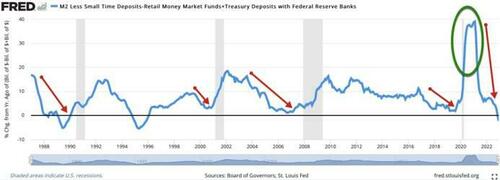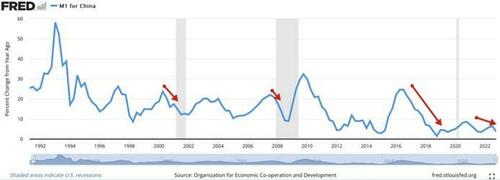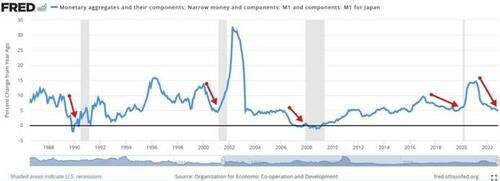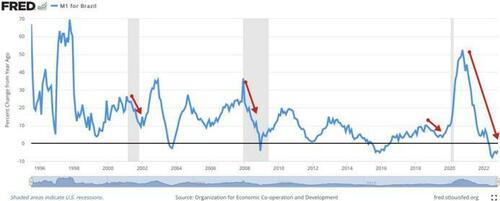With much fanfare, the Biden administration announced this week the availability of the first subsidies for domestic semiconductor manufacturing facilities funded by the $52 billion bipartisan CHIPS and Science Act.
Yet, many of the people who support the law’s goals of subsidizing semiconductor production were surprisingly glum as they pointed to all the processes, mandates, and regulations the administration was attaching to this new money.
Manufacturers looking to get a CHIPS Act subsidy will have to abide by union wage mandates, provide child care for their workers, buy American materials, submit their new subsidized facilities to onerous federal environmental reviews, and potentially share any “excess profits” with the government.
The value of these new subsidies will be spread thin indeed as a result.
“Everyone acknowledges what we are trying to do here, in trying to make a larger, more globally competitive U.S. semiconductor industry, is a difficult challenge,” said economist Adam Ozimek to The New York Times. “Advocates of industrial policy should worry that not only is this going to fail, but it’s going to discredit industrial policy for a generation.”
Economics blogger Noah Smith was even more despondent this week when he declared the U.S. a “build-nothing country” for its failures to create not just more semiconductor factories but also solar farms, transit lines, housing, and more.
“America is spending all the money, and things still aren’t getting built,” wrote Smith.
This is an increasingly frequent complaint one hears from a growing set of liberal and left-wing writers. They bemoan America’s inability to convert monetary investment, both public and private, into actual physical things progressives have long wanted: more affordable housing, more renewable energy, more mass transit, and more stuff generally.
We’ve gotten worse at building these things, even as our need and desire for them has grown.
“The revolution in communications technology has made it easier than ever for ordinary people to loudly identify the problems that they see in the world. But this age of bits-enabled protest has coincided with a slowdown in atoms-related progress,” wrote Derek Thompson in an essay for The Atlantic last year. “Altogether, America has too much venting and not enough inventing.”
What’s both interesting and encouraging about hearing these gripes coming from a portion of the left is they’ve started to echo longstanding libertarian criticisms of the American regulatory state.
Government approval processes are overly long, burdensome, and deferential to third-party “stakeholders” for no discernible benefit. Excessive public meeting requirements, done in the name of community input, allow any old gadfly to delay billion-dollar projects. Special interests have erected reams of anti-competitive regulations that only serve to increase costs and strangle choice. The right to earn a living has been replaced with a need to beg for permission for doing anything new.
These “supply-side progressives” are calling to significantly liberalize or even eliminate much of this regulatory morass.
Smith thunders against “the country’s broken system of permitting, land use, and development.” Liberal blogger Matt Yglesias wants to significantly pare back the environmental review requirements in the National Environmental Policy Act and liberalize immigration until we have “one billion Americans.” The Atlantic‘s Jerusalem Demsas decries America’s “permission-slip culture” created by occupational licensing. The New York Times liberal columnist Ezra Klein says plainly that “regulators make it hard to increase supply” of everything from health care technologies to new workers. Everyone hates zoning.
They all want to peel back red tape in service of an “abundance agenda.”
Could this be the libertarian moment? Sadly, no.
While they see the flaws of the American state as she exists, these abundance agenda evangelists are still hopelessly chained to the idea that they can change her for the better.
The criticisms of the Biden administration’s implementation of CHIPS Act subsidies are a useful illustration of the limits of this worldview.
Supply-side progressives are raising hell over the ways regulatory roadblocks are undermining one of the largest expansions of federal corporate welfare in a generation. But investing huge sums of taxpayer money into semiconductor production is inherently a bad, wasteful idea, child care mandates and union work rules notwithstanding.
Indeed, we’ve been down this road before.
In the late 1980s and early 1990s, the U.S. government slapped tariffs on imported semiconductors, helped set up a public-private consortium of semiconductor manufacturers called Sematech, and showered an inflation-adjusted $1.2 billion on the consortium to pump out cutting-edge, globally competitive products.
The results, Reason‘s Eric Boehm recounted in his 2021 history of Sematech, were less than inspiring. The chips manufactured by Sematech were years behind the market. Companies responded to federal subsidies by slashing their own research budgets.
The venture failed even without having to spend a lot of money complying with union work rules and child care mandates.
Similar examples abound overseas.
No one would describe Communist China as a place where the state is slow to act or the regulatory process has been hijacked by excess public input and veto points. And yet the Chinese Communist Party’s industrial policy aimed at boosting their own semiconductor industry has largely been a bust. Beijing is now trying to taper off expensive government subsidies.
The fact is there are pretty hard limits to what the most intelligent government bureaucracies can achieve, even when they’re unencumbered by unproductive regulations and special interest carve-outs.
That’s certainly the case for something exceedingly complex already, like semiconductor industrial policy. It’s also true for slightly more simple things supply-side progressives want the government to do, like build a mess of new transportation infrastructure.
By an interesting coincidence, the same day that Biden’s Commerce Department made available the first CHIPS Act grants, his Transportation Department was announcing the first wave of grant awards in a new program: the Reconnecting Communities Pilot Program.
The program is designed to repair the damage done to neighborhoods that were cut in half by the construction of mid-century urban highways. The consensus is that destroying existing, thriving urban neighborhoods (usually with liberal use of eminent domain) to build interstates was a bad idea. Almost everyone who might identify as a supply-side progressive certainly would. But those urban highways are also a relic of a supped-up state that did in fact build things.
California’s disastrous high-speed rail is perhaps one of the archetypal examples of the supply-side progressive criticism of American governance: a good idea derailed by cynical environmental lawsuits, overwhelmed and under-experienced bureaucrats, rampant NIMBYism, and political meddling of elected officials.
And yet, even countries that don’t have all those particular problems of “state capacity” still end up building a lot of wasteful infrastructure.
Take Spain and its well-earned reputation as Europe’s “rail capital.” While the Golden State struggles to complete a rail line between Bakersfield and Merced, Spain has managed to add 2,400 miles of high-speed rail lines over the past three decades. Some of these projects came in delayed and over budget, but they still got built. They even connect cities that people actually want to travel between.
And yet, when European Union auditors reviewed the literature on Spanish high-speed rail projects in 2018, they found that the benefits of these projects were almost always wiped out by their costs.
“In reality, some projects have only a limited chance of viability from a social cost-benefit perspective, … but they are being built nevertheless,” auditors concluded.
Spain can build high-speed rail in that the government can decide a line should go from A to B and it ends up happening mostly on time and on budget. But these projects are still wasteful in that they’re not providing benefits in excess of their costs.
Libertarianism has a pretty straightforward way of preventing this from happening. To the greatest extent possible, turn infrastructure over to private firms tapping private capital to build projects with the expectation they’ll earn a tidy return from the fees users of that new infrastructure will eventually pay.
If drivers won’t pay the tolls to support a new bridge to nowhere, that bridge won’t get built. Supply-side progressives don’t have nearly as clear of a mechanism for allocating scarce capital effectively, other than whatever sausage-making the political process turns out.
For someone like Klein, it’s enough that the government is shifting its spending decisions from subsidizing demand to subsidizing supply. In his Times piece sketching out supply-side progressivism, he approvingly cites several Biden advisors arguing the administration’s “transportation, rail, public transit and port investments will reduce efficiency-killing frictions that keep people and goods from getting to markets as quickly as they should…The child and elder care investments will boost the labor supply of caretakers. The educational investments in pre-K and community college will eventually show up as higher productivity as a result of a better-educated work force.”
That’s a lot of line of items to prioritize!
Trying to do them all at once is a recipe for inefficiency and failure. That’s particularly true if you also want private investment to be added to the supply-side equation too. Abundance agenda folks are working at cross purposes.
Take the recently passed $1.2 trillion Infrastructure Investment and Jobs Act, which included $550 billion in new transportation infrastructure spending above preexisting levels. The goal of the law is to build, and it provides a lot of money to that end.
All that new government spending is having the unintended consequence of raising costs for America’s homebuilders. Construction industry analysts note the huge influx of government infrastructure dollars has raised prices for steel, cement, copper, lumber, and other things developers also need to build new housing.
“The housing industry, which has boomed thanks to low mortgage rates, is worried about the competition coming from infrastructure projects,” reported Bloomberg in 2021. The low interest rates are now gone, but the inflated materials costs are here.
Notably, this phenomenon of infrastructure spending squeezing out some housing production isn’t solely a product of the environmental review laws, union work rules, or Buy America provisions. It’s an inherent result of dumping a bunch of government money into building infrastructure while a lot of new housing also needs to be built.
One element of the abundance agenda must give way to the other.
This is why the libertarian insistence on a minimal state and private, profit-seeking allocation of capital across the board is crucial. It does more than just weed out bad individual projects. It also balances competing uses for capital by sending it to the most profitable projects. One project’s higher returns are a signal more people value that use of scarce resources than alternative investments.
A mess of government spending totally divorced from earning a return on investment obscures these signals.
Another supply-side progressive answer is to create professional, efficient civil service insulated from excessive public input and political meddling. Such a bureaucracy would forgo wasteful projects and build efficient ones. On the macro level, overall spending is allocated effectively.
But it’s hard to see that playing out so long as there’s any meaningful democratic input into how public infrastructure dollars, or public dollars generally, are spent. The benefits of new programs will always be apparent, while the costs to society are diffuse and often invisible.
That’s particularly true if a bureaucracy is good at what it does. Fewer bad headlines about how project X is delayed by Y years and will cost an additional $Z billion dollars lowers the political risk of spending money on low-value projects.
Lastly, the supply-side progressive faith that bureaucracies will be efficient and benevolent if we remove regulations that allowed special interests to capture them ignores a key insight of public choice theory: that state bureaucracies are themselves a special interest group with priorities beyond maximizing the greatest good for the greatest amount of people.
Demsas’ otherwise on-point takedown of America’s ludicrous, burdensome system of occupational licensing includes this odd defense of government regulation properly conceived.
“Permission-slip governance reflects not the government’s strength but its weakness. A strong government well staffed with experts would write clear regulations and enforce them. The government we actually have imposes permission-slip requirements pushed by interest groups and industry, then relies on consumers to pursue private legal remedies if anything goes wrong,” she writes. “This is a legacy of Republican attacks on Big Government, which not only constrained the size of the state but diminished its efficacy.”
In fact, from the dawn of the regulatory state, interest groups and industry have twisted regulation to their benefit. This wasn’t a phenomenon invented by Ronald Reagan and Newt Gingrich.
Nominally independent agencies have an obvious interest in growing their own power. That leads them to make serious errors in judgment all the time, whether that’s the Food and Drug Administration cracking down on vaping or the Consumer Financial Protection Bureau inventing and prosecuting financial crimes all on its own.
As Reason‘s Peter Suderman noted yesterday, many of the problems that abundance agenda supporters decry are also products of past regulatory interventions liberals are mostly united in supporting today.
There’s a lot to recommend about the liberal abundance agenda, supply-side progressivism, or whatever you want to call it. It correctly diagnoses many of the current problems with America’s overweening regulatory state. Embedded in it is a greater appreciation for the wealth-enhancing effects of markets. It grasps the truism that production has to precede consumption.
At the end of the day, I’d prefer that if a government wastes billions on a high-speed rail project, it actually manages to build a high-speed rail project.
And for lots of supporters of the abundance agenda, there’s a pleasingly individualistic focus to their political economy.
Thompson writes, “The abundance agenda aims for growth, not because growth is an end but because it is the best means to achieve the ends that we care about: more comfortable lives, with more power to do what we want, with more time devoted to what we love.”
The libertarian critique of this vision is that individualistic ends require individualistic means, that is a free market largely free from state intervention. Supply-side progressives see a big government as a problem and solution. That’s a problem in and of itself.
The post The Problem With the 'Abundance Agenda' appeared first on Reason.com.
from Latest https://ift.tt/KwoZO2c
via IFTTT














